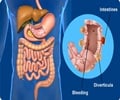ETS-5, which controls signals from the brain to the intestines through a feedback mechanism, regulating food intake and appetite.

- A gene, encoding a transcription factor called ETS-5 controls signals from the brain to the intestines.
- A diet that supports growth elicits a different response in worms compared with low quality food.
- The ETS gene family controls food intake through a feedback system to the brain.
The team, led by Associate Professor Roger Pocock at the Monash Biomedicine Discovery Institute and his colleagues at the University of Copenhagan, published their results in the Proceedings of the National Academy of Sciences, a prestigious US journal.
Associate Professor Pocock and his team discovered a gene, encoding a transcription factor called ETS-5, which controls signals from the brain to the intestines. Associate Professor Pocock explained that when the intestine had stored enough fat, the brain would receive the message to stop moving, effectively putting the worm to sleep.
"When animals are malnourished they seek out food by roaming their environment. When they're well fed they have no need to roam, and when they're fully sated they enter a sleep-like state," Associate Professor Pocock said.
The researchers studied Caenorhabditis elegans, or the roundworm, because of the comparative simplicity of its brain -- it has just 302 neurons and 8,000 synapses, or neuron-to-neuron connections, all of which have been mapped. Compare this with the human brain which has billions of neurons, more than 160,000 kilometres of biological wiring, and 100 trillion synapses.
In mammals, a diet loaded with fats and sugars stimulates overfeeding, leading to obesity. When fed on low quality food the worms roamed in search of better nutrition.
"The ETS family of genes is present in humans and has previously been linked to obesity regulation. Now that we've learned this gene family controls food intake through a feedback system to the brain, it represents a credible drug target for the treatment of obesity," he said.
Reference
- Roger Pocock et al., Worm gene could be key to developing obesity treatment, Proceedings of the National Academy of Sciences (2017) http://dx.doi.org/10.1073/pnas1610673.
Source-Medindia















